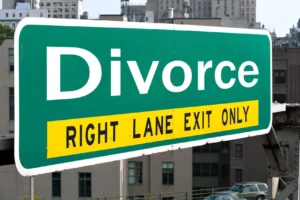Arson Accusations: Legal Defenses and Potential Penalties
Arson accusations represent some of the most serious charges an individual can face within the criminal justice system. The deliberate and malicious setting of fires not only poses immense risks to property but also endangers human life, making it a crime that prosecutors pursue with particular vigor. Understanding the legal landscape surrounding arson charges, including potential defenses and the severe penalties associated with conviction, is crucial for anyone facing such allegations or working in the legal field.
At its core, arson is defined as the intentional and malicious burning or charring of property. However, the legal definition and classification of arson can vary significantly between jurisdictions. In most states, arson is categorized into degrees based on factors such as the type of property involved, the presence of people in the structure, and the intent behind the act. First-degree arson, often involving occupied structures, typically carries the most severe penalties, while lower degrees may apply to the burning of unoccupied buildings or personal property.
The prosecution of arson cases presents unique challenges due to the destructive nature of fire itself. Fire investigation techniques have evolved significantly over the years, employing advanced forensic methods to determine the origin and cause of fires. However, the reliability of some traditional fire investigation techniques has come under scrutiny in recent years, leading to successful challenges of arson convictions and a reevaluation of investigation protocols.
One of the key elements in any arson case is proving the element of intent. Prosecutors must demonstrate beyond a reasonable doubt that the fire was set deliberately and with malicious intent, rather than occurring accidentally or through negligence. This often involves piecing together circumstantial evidence, as direct evidence of arson can be difficult to obtain. Factors such as the presence of accelerants, multiple points of origin, or attempts to disable fire suppression systems may be used to establish intent.
The use of accelerants in arson cases is a critical area of focus for both prosecutors and defense attorneys. Common accelerants include gasoline, kerosene, and other flammable liquids that can quickly spread a fire. The detection and analysis of accelerant residues require sophisticated laboratory techniques, and the interpretation of these results can be a point of contention in legal proceedings. Defense strategies may involve challenging the reliability of accelerant detection methods or offering alternative explanations for the presence of these substances.
Fire pattern analysis is another crucial aspect of arson investigations that can be subject to legal scrutiny. Investigators examine burn patterns, smoke stains, and other physical evidence to determine how a fire spread and where it originated. However, the interpretation of these patterns is not always straightforward, and experts may disagree on their significance. Recent advancements in fire science have led to a reevaluation of some long-held beliefs about fire behavior, potentially impacting the way arson cases are prosecuted and defended.
The role of eyewitness testimony in arson cases presents its own set of challenges. Witnesses to the start of a fire may be rare, and those present during a fire’s progression may have limited visibility or be focused on escape rather than observation. Additionally, the stress and chaos of a fire situation can affect the reliability of eyewitness accounts. Defense attorneys may challenge the accuracy of such testimony, particularly if it conflicts with physical evidence or scientific understanding of fire behavior.
One of the most severe potential consequences of an arson conviction is the possibility of felony murder charges if deaths occur as a result of the fire. In many jurisdictions, deaths resulting from arson are treated as first-degree murder, regardless of whether the arsonist intended to harm anyone. This means that even if the primary intent was property damage, an arsonist could face life imprisonment or even capital punishment if fatalities occur. The potential for such severe penalties underscores the gravity of arson charges and the importance of a robust legal defense.
The intersection of arson and insurance fraud adds another layer of complexity to many cases. Arson committed for the purpose of collecting insurance payouts is a serious offense that often involves extensive financial investigations alongside the fire investigation. Prosecutors may need to establish not only that a fire was deliberately set but also that it was done with the specific intent to defraud an insurance company. This can involve scrutiny of financial records, business practices, and personal circumstances of the accused.
Defending against arson charges requires a multifaceted approach that often combines scientific expertise with legal strategy. One common defense is challenging the determination that a fire was intentionally set. This may involve presenting alternative theories for the fire’s origin, such as electrical malfunctions, spontaneous combustion, or accidental ignition. Expert witnesses in fire science, electrical engineering, or other relevant fields may be called upon to support these alternative explanations.
Another potential defense strategy involves questioning the reliability of fire investigation techniques used in the case. As mentioned earlier, some traditional methods of fire investigation have been called into question by advances in fire science. Defense attorneys may argue that outdated or unreliable methods were used to determine arson, potentially casting doubt on the prosecution’s entire case.
The issue of mental state at the time of the alleged offense can also play a crucial role in arson defenses. In some cases, defendants may argue that they were not in a sound mental state when the fire was set, potentially leading to reduced charges or alternative sentencing options. This defense might involve psychiatric evaluations and expert testimony on the defendant’s mental health.
Alibi defenses can be particularly effective in arson cases, given the specific timing involved in setting a fire. If a defendant can provide solid evidence of being elsewhere when the fire was started, it can significantly undermine the prosecution’s case. However, the effectiveness of alibi defenses can be complicated by the potential use of delayed ignition devices or the difficulty in precisely determining when a fire began.
The concept of proximate cause can also come into play in arson cases, particularly when deaths or injuries occur. Defense attorneys may argue that intervening factors, such as malfunctioning safety equipment or the actions of others, were the proximate cause of harm rather than the initial act of setting the fire. This argument can be particularly relevant in cases where the consequences of the fire were more severe than might have been reasonably anticipated.
The use of forensic evidence in arson cases has evolved significantly with technological advancements. Digital forensics may play a role, particularly in cases where electronic devices are suspected of being used to plan or execute arson. Cell phone records, GPS data, and internet search histories can all potentially provide crucial evidence for both prosecution and defense. However, the interpretation and admissibility of such digital evidence can be subject to legal challenges.
The role of motive in arson cases is another area ripe for legal argument. While motive is not technically an element that needs to be proven for an arson conviction, establishing a clear motive can be persuasive to juries and influential in sentencing decisions. Common motives for arson include financial gain, revenge, concealment of other crimes, or even pyromania. Defense strategies may involve challenging the prosecution’s proposed motive or offering alternative explanations for the defendant’s actions.
The impact of media coverage on arson trials can be significant, particularly in high-profile cases. Extensive pre-trial publicity can potentially taint the jury pool, making it difficult to find impartial jurors. Defense attorneys may seek changes of venue or employ other strategies to mitigate the effects of negative publicity. Conversely, media scrutiny can sometimes work in favor of the defense by exposing flaws in the investigation or prosecution’s case.
The use of plea bargaining in arson cases presents its own set of considerations. Given the potential for severe penalties, prosecutors may offer plea deals to secure convictions without the risk and expense of a trial. For defendants, accepting a plea bargain may result in reduced charges or sentencing recommendations. However, the decision to accept a plea deal in an arson case must be carefully weighed against the strength of the evidence and the potential consequences of a conviction at trial.
The intersection of arson laws with environmental regulations has become an increasingly important consideration in some cases. Fires can release toxic substances into the environment, potentially leading to additional charges or civil liabilities beyond the arson itself. This aspect of arson prosecution reflects growing concerns about environmental impact and may involve complex scientific evidence regarding pollution and long-term ecological effects.
The role of fire suppression systems in arson cases can be a point of legal contention. The presence or absence of functioning smoke detectors, sprinkler systems, or other fire safety measures may influence both the spread of the fire and the legal culpability of various parties. In some cases, failure to maintain proper fire safety systems could shift some liability away from the alleged arsonist and onto property owners or managers.
The use of arson dogs, specially trained canines that can detect accelerants, has become more common in fire investigations. However, the reliability and admissibility of evidence obtained through these dogs have been challenged in some courts. Defense attorneys may question the training and certification of arson dogs, as well as the potential for handler bias in their deployment and interpretation of alerts.
The concept of transferred intent can come into play in arson cases where unintended targets are affected. For example, if an arsonist sets fire to one building but the fire spreads to adjacent structures, they may be held legally responsible for all resulting damage and harm. This principle can significantly expand the scope of charges and potential penalties in arson cases.
The impact of building codes and fire safety regulations on arson cases is another area of legal consideration. Violations of these codes, either by property owners or in the construction of buildings, can affect the spread and damage caused by fires. This can lead to complex questions of liability and may influence the severity of charges or sentencing in arson cases.
The use of surveillance technology in arson investigations and prosecutions has increased dramatically in recent years. Security camera footage, traffic cameras, and even private doorbell cameras can provide crucial evidence in establishing the presence of suspects at fire scenes. However, the use of such evidence also raises privacy concerns and questions about the reliability and interpretation of video footage.
The intersection of arson with hate crime legislation is an important consideration in cases where fires are set with bias motivations. Arson targeting specific racial, religious, or other protected groups may be prosecuted under hate crime statutes, potentially leading to enhanced penalties and federal involvement in the case.
The role of fire departments in arson investigations can sometimes be a point of legal scrutiny. While firefighters are often the first responders and initial investigators at fire scenes, questions may arise about their qualifications to make determinations about arson. Defense attorneys may challenge the expertise of firefighters in conducting complex fire origin and cause investigations.
The use of social media evidence in arson cases has become increasingly common. Posts, messages, or online searches related to fire-setting or specific targets may be used as evidence of intent or premeditation. However, the authentication and admissibility of social media evidence can be legally challenging, and defense attorneys may argue that such evidence is taken out of context or does not accurately reflect the defendant’s state of mind.
The impact of mental health issues on arson cases is a complex area that often requires expert testimony. Conditions such as pyromania or certain personality disorders may influence an individual’s fire-setting behavior. While not necessarily exculpatory, these factors may play a role in determining criminal responsibility or influencing sentencing decisions.
The use of comparative case analysis in arson investigations has gained traction as a method for identifying patterns and potentially linking multiple fires to a single perpetrator. However, the scientific validity and legal admissibility of such analyses can be subject to challenge, particularly when used to implicate a defendant in multiple arson incidents.
The role of community impact statements in arson sentencing has become more prevalent in some jurisdictions. These statements allow representatives of affected communities to express to the court how an arson has impacted the broader neighborhood or group. This practice recognizes that arson often has ripple effects far beyond the immediate property damage, affecting community safety, economic stability, and social cohesion.
In conclusion, arson accusations represent a complex and evolving area of criminal law that intersects with scientific evidence, psychological factors, and broader societal concerns about public safety and property rights. The severe potential penalties associated with arson convictions reflect the serious nature of these offenses and the significant harm they can cause to individuals and communities. As fire investigation techniques continue to advance and legal standards evolve, it is crucial for legal professionals, investigators, and policymakers to stay informed about the latest developments in arson law and forensic science. For individuals facing arson charges, understanding the complexities of these cases and securing experienced legal representation is essential to navigating the serious legal challenges they present.
Website citations:




















